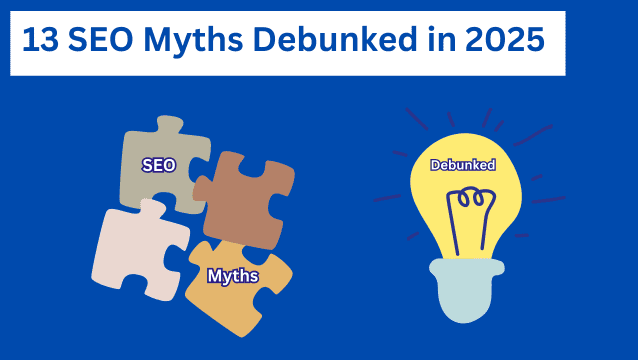If you don’t analyze what your competitors are doing, you’re missing out on key opportunities to grow your business.
And when it comes to refining your SEO strategy, you can’t forget about backlinks.
Running a competitor backlinks analysis is one of the fastest ways to see how your link building efforts are paying off.
You’ll learn what’s working for others in your industry so you can get similar results — or even better ones. Whether you’re new to link building or looking to sharpen your approach, understanding competitor backlinks must be on your agenda.
Let’s take a closer look at why this is valuable, how to do it, and what to look for along the way.
What is a competitor backlinks analysis?
A competitor backlinks analysis looks at your competitor’s link profiles. You run one to find where your competitors’ backlinks come from. You can also uncover how these links help your competition get more visibility and trust from search engines.
When you identify these links, you can:
- Adopt strategies that are helping your competitors rank higher
- Target specific sites for link building
- Spot new opportunities
But analyzing competitor backlinks isn’t about copying links. It’s about learning what’s out there and finding good backlink opportunities that fit your brand.
When done right, it can give you the edge you need to climb search engine rankings.
Let’s take a closer look at why it’s essential to run a competitor backlinks analysis.
Why it’s important to conduct a competitor backlinks analysis
It’s well-known that running a competitor backlinks analysis helps bring clarity and direction to your SEO strategy. That’s why 90% of Fortune 500 companies swear by them (Emerald)
Here are some key reasons you should make this a regular part of your SEO routine:
- Save time: According to research by TechJury, analytics helps businesses make decisions 5x faster. Your competitors may already have links from sites in your industry. Targeting these sites saves you time since you won’t have to hunt for relevant links from scratch.
- Boost link-building success: Websites linking to your direct competitors are likely open to linking to you as well. This improves your chances of building valuable backlinks.
- Discover common linking sites: Find websites that consistently link to brands in your niche. If these sites link to brands in your industry, they might link to you, too.
- Inspire new strategies: Reviewing competitor links can spark fresh ideas for content. (And promotion tactics that could drive links to your site.)
- Stay competitive in SEO: Regular analysis helps you examine how your backlink profile measures up to others. And how to get ahead.
How to analyze your competitor’s backlinks (step-by-step)
Now that you’re clear on the basics, let’s look at how to conduct a competitor backlink analysis.
Step 1: Know which target keywords contribute to your search engine visibility
Which target keywords drive traffic to your site?
Review the primary keywords in your SEO strategy. And use SEO tools like Ubersuggest, Spyfu, or Morningscore. These can help you see which keywords bring the most visibility to your competitors.
Focus on the keywords where your competitors outperform you. This is where you need more backlinks to boost your rankings and stay competitive. This step lays a strong foundation for your entire analysis.
Step 2: Identify competitors and find common links
List your direct competitors — those with similar audiences and offerings. (Use SEO tools to compile a list of domains that rank for your focus keywords.) Once you know who your competitors are, look at their backlink profiles.
Take a look at the domains and sites that link to multiple competitors.
When you see the same sites linking to several competitors, it’s a clear signal that these are valuable backlink sources. Consider these sites as high-priority targets in your backlink strategy.
Step 3: Pinpoint competitors’ strategies
Look for patterns in your competitors’ link profiles to understand their strategies. (More on this further below.) There are several actionable insights you can use to your advantage.
For instance, pay attention to:
- Number of linking domains: How many unique domains link to each competitor? Note the domain authority (DA) or domain rating (DR) of these links. What about multiple mentions per domain?
- Authority sites: Identify how many high-DA sites link to your competitors. These links add a lot of value to search rankings.
- Industry-specific sites: See if there are niche sites linking to your competitors. These are prime targets.
- Anchor texts: Look at competitor backlink anchor texts. Are they descriptive and relevant? Long or short? Branded or unbranded?
- Link type: Check if the backlinks are do-follow or no-follow. Do-follow links carry more weight for SEO.
Here’s how to dig deeper into your competitors’ strategies.
(And how to apply what you learn.)
Look for patterns in linking sites
When you review multiple competitors’ backlinks, you may notice patterns in the types of websites that link to them. For example, do many of them have backlinks to sites with industry-specific blog content? What about local news outlets or popular forums?
Hint: If top competitors get links from a specific blog network in your niche, those sites are open to external contributions. Consider reaching out to them to pitch relevant content. Or find similar authoritative sources and offer them relevant guest posts.
Always read guest-posting guidelines before pitching. This gives you the best chance at getting a “yes” from the publisher.
Identify common types of content attracting links
Different content types tend to attract different types of links.
Seeing what works for your competitors shows you where your content might be weak — and how you can improve your link-building strategy.
If you see that your competitor’s how-to guides or product comparison posts are getting a lot of links, make similar content. (But focus on topics that haven’t been covered. Or expand on popular ones with more updated or unique insights. Otherwise, the site will likely deny your guest post.)
Also, check to see if they use infographics, data-driven reports, or video content to get backlinks. If so, think about adding these formats to your strategy.
Examine outreach patterns
Successful backlink strategies usually involve targeted outreach efforts.
If your competitor has a long list of valuable backlinks from certain types of websites, they may be reaching out regularly to secure those links. You can do the same by identifying similar sites and tailoring your outreach strategy to appeal to them.
Let’s say a competitor has multiple links from educational sites — or .edu domains. This pattern might suggest they’re positioning themselves as industry experts. (Maybe by providing valuable research or resources for educational purposes.) You could reach out to similar sites and offer whitepapers and research studies. Or authoritative content related to your industry.
But it’s important to mention that outreach is a full-time job.
If you’re looking to scale your backlinks (ethically), consider partnering with a backlink service. They’ll secure relevant guest posting opportunities for you. They’ll even write your content so you can focus on running your business.
Study anchor text choices for high-impact links
Look at the linked text (“anchor text”) your competitors use to optimize for search engine rankings. Are any anchor text patterns consistently appearing in your competitors’ backlinks?
If a competitor uses similar keywords in their anchor texts, such as “best SEO tools for marketers” or “best marketing tools,” these phrases may contribute to their search rankings. You could target similar anchor texts to optimize your backlinks for those exact keywords.
You can also identify gaps in their anchor text strategy. (Like missing secondary keywords. Or only focusing on short-tail keywords.)
Optimize for these unique anchor texts to give yourself an edge.
Track link-building campaigns through new vs. older links
Look at the backlink dates in your competitor’s profile. It might be part of a current campaign if they have recent links from reputable sources.
Knowing your competitors’ link-building efforts timeline can reveal recent strategies or seasonal patterns.
For instance, if a competitor gets a lot of backlinks every quarter, they may be running PR campaigns. Or launching new content during these times.
This lets you know when your competitors are most active, allowing you to plan your campaign schedule. For example, you might schedule your outreach or content launches to match important industry events or seasonal trends.
Identify high-value referring domains and link placements
Some links carry more value because of the authority of the referring site — or their placement on the page. To find good link opportunities, look at which sites your competitors get links from. And where on the page those links appear
If competitors always get links from well-known sites with links in the main body of articles, try to connect with similar sites.
Avoid sites that push links into footers or crowded resource lists. These tend to have less impact since there’s no relevant context. Instead, pitch your content in a way that makes it valuable enough to feature within the article’s body. (Think actionable examples, resources, or helpful tips.)
Identify and fill “link gaps”
A link gap analysis shows you where competitors have backlinks that you’re missing.
When you find these gaps, you can contact the sites and try to get similar links. This can help you rank higher than your competitors.
If many competitors have links from a specific industry directory, forum, or blog, but you don’t, consider following suit. Reach out to these sites. Or, create similar content on your site to get these links.
How to evaluate competitor backlinks
Not all backlinks are equal. You need high-quality backlinks from reputable sites to build a strong backlink profile.
Here’s how to identify and evaluate the best backlinks from your competitors.
Relevance
Backlinks work best when they’re relevant to the content.
The best backlinks come from sites that talk about your industry. (Readers are more likely to click on links that really help them.)
Avoid linking opportunities that seem like random product placements. Instead, find chances to link to where your content or service offers a helpful addition to the reader’s journey. This can improve your click-through rate and raise your credibility with search engines.
Quality
Backlink quality beats quantity every time. High-quality backlinks, especially from sites with high domain authority, can have a massive impact on your rankings. These tend to come from sites with substantial organic traffic, strong content, and high industry relevance.
When scanning your competitors’ backlinks, steer clear of links from spammy sources — like low-quality forums or unrelated blogs.
Instead, look for links from reputable news sites, industry influencers, and popular blogs in your niche. These sources offer more value and enhance your credibility.
Placement
Where a backlink sits on the page matters. Links positioned in the main content or near the top of an article tend to get more clicks.
When you evaluate a potential link opportunity, think about how prominent your link placement will be. If it’s buried in the content with little chance of getting attention, it might be worth looking for a better opportunity.
Need help tracking and beating your competitors’ backlinks?
Conducting a competitor backlinks analysis requires careful attention to detail so you can pinpoint key strategies. And learn how to beat your competitors’ rankings.
But it doesn’t have to be overwhelming.
If you want to stay ahead in your industry we can help, we are the leading link building agency for high authority backlinks – book a free consultation with uSERP. We’ll create a custom link building plan that fits your SEO goals.
FAQs
How to analyze competitors’ backlinks?
To analyze competitors’ backlinks, use a backlink checker tool to see the sources linking to your competitors. Look at the quality, relevance, and authority of each backlink to decide which sites to target in your strategy.
How to download competitors’ backlinks?
Most SEO tools, like Ahrefs and SEMrush, will let you download a list of your competitors’ backlinks.
You can do this to analyze them offline — and organize data for your link-building plan.
Which is the best tool to check backlinks?
Some of the best tools for checking backlinks include Ahrefs, SEMrush, and Moz. You can pull detailed backlink data and insights into your competitors’ link profiles.
How to analyze backlink profiles?
Analyzing backlink profiles means looking at the strength of the websites linking to your competitors. Look at domain authority, relevance, and the placement of each link.
This process shows you which backlinks offer the most value. (And helps you target quality link sources.)
Should you research your competitors’ backlinks?
Yes, researching your competitors’ backlinks is important. It helps you find potential backlink opportunities, stay competitive in SEO, and discover new content ideas that can drive traffic and improve rankings.


